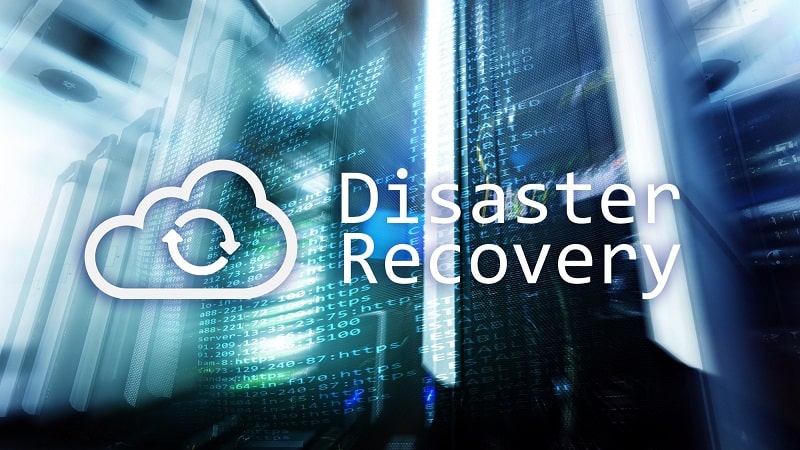Hyperconverged Infrastructure for Disaster Recovery

By: Scott Aukema, Director of Digital Marketing, ViON Corporation
The benefits of hyperconverged infrastructure (HCI) as a foundation for building a cloud platform are well documented, as organizations are turning to HCI to simplify complexity for both hardware and virtualized environments. We’ve recently published a white paper in collaboration with Nutanix and Fujitsu on this topic, Simplifying Multi-Cloud and Securing Mission Progress. But recent research from Meritalk1 highlights that HCI represents many other use cases beyond cloud. In this first installment in a series of 3 blogs, we’ll examine how HCI is impacting disaster recovery (DR) in the data center.
Disaster recovery incidents generally occur as a result of either catastrophic loss of a data center like a fire or flood, equipment loss within the data center, component failure of a single server (or set of devices), or lack of network access due to networking issues.2 Hyperconverged Infrastructure, combining storage, compute, and network hardware with hypervisor software to create and run virtual machines, is well suited to perform disaster recovery functions to protect against these types of incidents.
Similar to traditional disaster recovery, production environments can be regularly replicated in the HCI system. In the event the data center suffers a failure, the replica virtual machine could be quickly brought online and hosted on the hyper-converged system, in a secondary datacenter. The HCI environment could host the failed over workload until the primary location is back up and running, even running those workloads indefinitely, if needed. There are a number of factors that make hyper-converged infrastructure ideally suited for a DR scenario:
- Rapid (Instant) Recovery – Most HCI solutions include a comprehensive backup and recovery capability for short Recovery Time Objective (RTO) windows. Through the use of virtual machine snapshots, IT managers can replicate the secondary copy to an HCI system in the secondary data center or a replicated environment in the public cloud. This provides on-site and off-site copies of the latest version of all VMs in the snapshot.3 Compared with traditional infrastructures, HCI offers a faster means to failover data in a disaster.
- Cloud Integration – The benefits of hyperconverged infrastructure are well-suited to building a hybrid cloud environment and the software defined nature of HCI means that public or private cloud can be used as a replication site for disaster recovery. In a multi-cloud world, managing public and private cloud environments, operating on-prem physical infrastructure, and moving virtual machines between these environments is essential to data protection. Hyperconverged Infrastructure, along with a cloud management platform (CMP) like ViON’s Enterprise Cloud can make it easier to orchestrate workloads across clouds and streamline the recovery process in the event of a disaster.
- Software-Defined Infrastructure – Software defined infrastructure simplifies the automation and orchestration of data replication and can provide continuous updates of remote copies with little or no impact on local performance. The built-in snapshot capabilities of the HCI hypervisor can streamline disaster recovery by replicating data to the DR environment, providing flexibility, speed, and reliability to recover quickly during a failure.
- Scale-Out Architecture – The inherent scale-out nature of a hyperconverged infrastructure allows IT organizations to quickly procure additional storage, compute, networking, and virtualization resources to expand capacity as needed, quickly and easily. This enables a greater volume of workloads in the same amount of time, with more resources available. Scale out architecture not only provides the resources for backup and recovery, but also allows for architectural freedom.
If you examine each of these factors independently, they deliver strong value for using HCI for DR purposes. But collectively, they represent a significant leap in efficiency, resiliency, and flexibility. While hyperconverged infrastructure may not be the right backup and recovery solution for every IT organization, it’s worthy of consideration.
In our next blog, we’ll examine how hyperconverged infrastructure is helping agencies accelerate their data analytics capabilities. In the meantime, we’d like to hear from you – what role is HCI playing in your data center?
1 – Meritalk Infographic, “Hyper Converged Without the Compromise: How Next Gen HCI Can Modernize Fed IT.
2 – ComputerWeekly.com – https://www.computerweekly.com/feature/Hyper-converged-infrastructure-and-disaster-recovery
3 – Network World.com – https://www.networkworld.com/article/3389396/how-to-deal-with-backup-when-you-switch-to-hyperconverged-infrastructure.html
